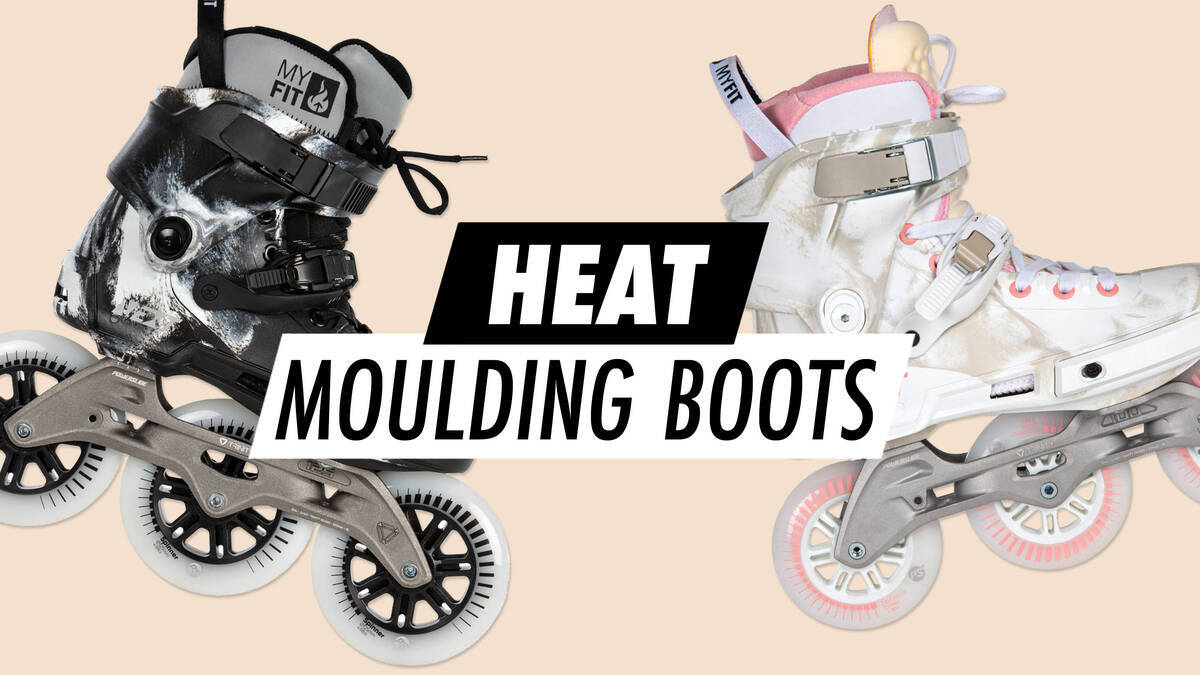Guide to Heat Mould Powerslide Boots


Thermo Forming of Boots

SHMR-Technology
SHMR represents Super Heat Mouldable Resin. This contemporary technology is utilised in modern racing shoes. The shell constructions are entirely distinct in comparison to boots that employ thermo sheets. We utilise a special heat mouldable epoxy that combines the various layers of carbon fibre. Racing shoes with the SHMR-Technology can be heat moulded at any point on the shell, thanks to the epoxy present throughout the shell and between every carbon fibre layer. Another benefit is that the epoxy can be repeatedly heat moulded without losing its effectiveness. The moulding temperature for racing shoes using SHMR-Technology is approximately 80-90 degrees Celsius, considerably lower than other technologies. Moreover, SHMR slightly reduces the shell's weight.
The recent racing shoes incorporating SHMR Technology include:
- Powerslide: Double X, Vision, Vision Junior, Infinity, C8, PH9
- Core Racing: Vi-Pro, Icon, Triple X2
Thermo Sheets
This “old school” approach remains prevalent in many heat mouldable speed boots. Thermo sheets consist of thin heat mouldable composite layers situated between the carbon layers of the shell. Typically, these have been implemented around the ankle portion of the boot. The boot can only be moulded where the thermo sheet is applied, and solely in that area, as carbon fibre itself lacks heat mouldability.
The downside of thermo sheets is their material becoming brittle after several heating cycles, limiting the moulding processes. Thermo sheets are not employed in any Powerslide or Core Racing shoes.
How do I heat mould my skates?
The entire Powerslide and Core Racing carbon boots collection is fully heat mouldable, utilising our advanced SHMR technology, also known as Super Heat Moulding Technology.
To achieve the optimal outcome, adhere to the ensuing steps.
Our boots are suitable for heat moulding with either your oven or a heat gun.
Notice! The boot may be heat moulded at any portion of the shell. It is advisable to keep the frame assembled to the boots and fit them while seated. Never exert your full weight on the skates during the heat moulding process!
- detach the wheels and loosen the laces and buckles
- pre-heat the oven to 80 °C - 90 °C
- position the boot in the middle of the oven
- let the boot remain in the oven for about 10-15 minutes until the shell around the cuff area becomes soft
Caution: Avoid positioning your foot in the overheated boot as it might cause burns!
Metal buckles or metal eyelets might also scald your finger!
- allow the boot to cool down a bit and check the temperature with your finger before stepping in
- secure the laces and buckles
- ensure your leg is in the correct skating posture
- wait for the boot to cool down
- use the plastic end of a screwdriver to adjust any area of the boot causing discomfort
- repeat the procedure with the other boot
You may heat mould your boots multiple times if the desired fit is not achieved.
Caution: When using the heat gun, maintain a safety distance of around 20 cm from the upper leather to prevent burning the material.
What speed boots are heat mouldable?
Almost every manufacturer provides heat mouldable speed boots. Check with your local retailer or the manufacturer to verify if they utilise “thermo sheets” in carbon fibre boots or similar technology to that used in Powerslide and Core Racing shoes. Remember, carbon fibre itself is not heat mouldable. Without a layer of this material, the boot cannot be moulded. SHMR Technology in the Powerslide and Core Racing carbon fibre shoes is an exception.
How often can I repeat the heat moulding process for my boots?
The process can be repeated as often as desired with SHMR technology.
Boots constructed with thermo sheets begin to weaken after several cycles. It's advised to heat-mould only when necessary. Consider customised boots if fitting issues persist despite heat moulding efforts.
Why do Powerslide and Core Racing shoes take longer to soften?
The distinction is in the epoxy quality used in shell production! Poor quality epoxy softens at lower temperatures, allowing the shell to become pliable more easily and quickly. Contrary to what many skaters believe, this is not advantageous. We exclusively use top-quality epoxy for all Powerslide and Core Racing shoes, necessitating higher temperatures to liquefy the epoxy, thereby taking more time to soften the shell.
Shoes with shells that soften at very low temperatures might unintentionally get heat-moulded simply by being stored in a truck exposed to direct sunlight.
